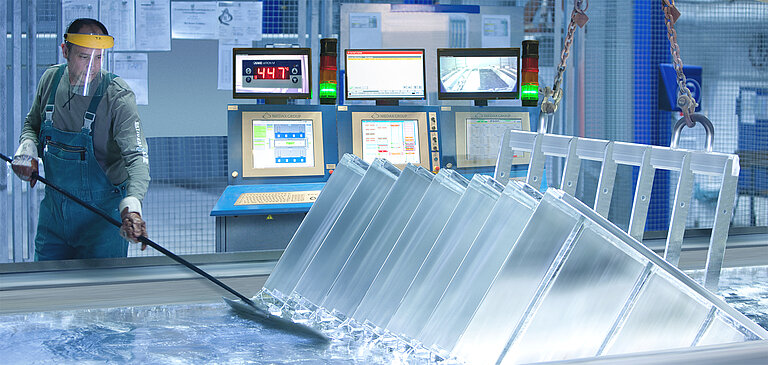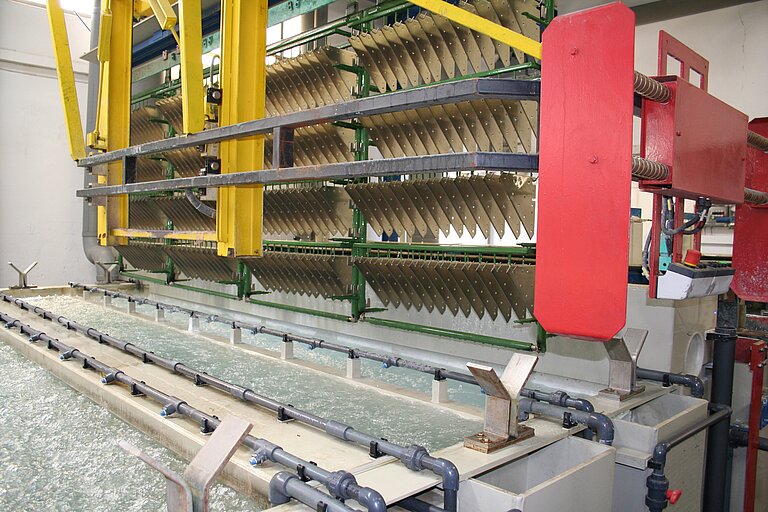Strip galvanizing (Sendzimir galvanizing) in accordance with DIN EN 10346
Strip galvanizing is a continuous process: The zinc coating is applied to both sides of a steel coil as it passes through a zinc bath. A thin iron-zinc alloy layer with a pure zinc layer on top is formed on the steel as a result of the process. The strip-galvanized steel is then further processed by forming, cutting and punching.
Strip-galvanized products differ fundamentally from batch-galvanized products. The zinc coatings on strip-galvanized materials are usually between 7 and 42 µm thick. This means that the thickness of the zinc coating on batch-galvanized components is often 5-10 times thicker.
The layer thickness of the Sendzimir tape used for Niedax cable laying systems is 10-20 μm depending on the product group, taking into account the DIN EN 10346 test method in accordance with the three-surface test. Up to a material thickness of 2 mm, cut edges are protected against corrosion by the effect of "self-healing" or "cathodic protection".
Strip galvanized components can be deformed without damaging the zinc surface.
Standards and requirements
DIN EN 10346 regulates the requirements for continuous hot-dip galvanized flat products. Depending on the galvanizing conditions, either a zinc bloom or zinc crystals of varying gloss and size may be present on the surface.
The sheets and strips according to this standard are usually used for applications where formability (folding, drawing, deep drawing) and a certain degree of protection against corrosion are paramount.
Corrosion protection
Strip galvanized components are not suitable for outdoor areas exposed to the weather. Strip galvanising offers virtually unlimited corrosion protection in dry, heated indoor areas that are inhabitable by people. This is where it is primarily used. Annual erosion is hardly measurable here. Reworking on site as a result of damage to the surfaces during transportation, storage and installation is possible, but not usual due to the area of application.







